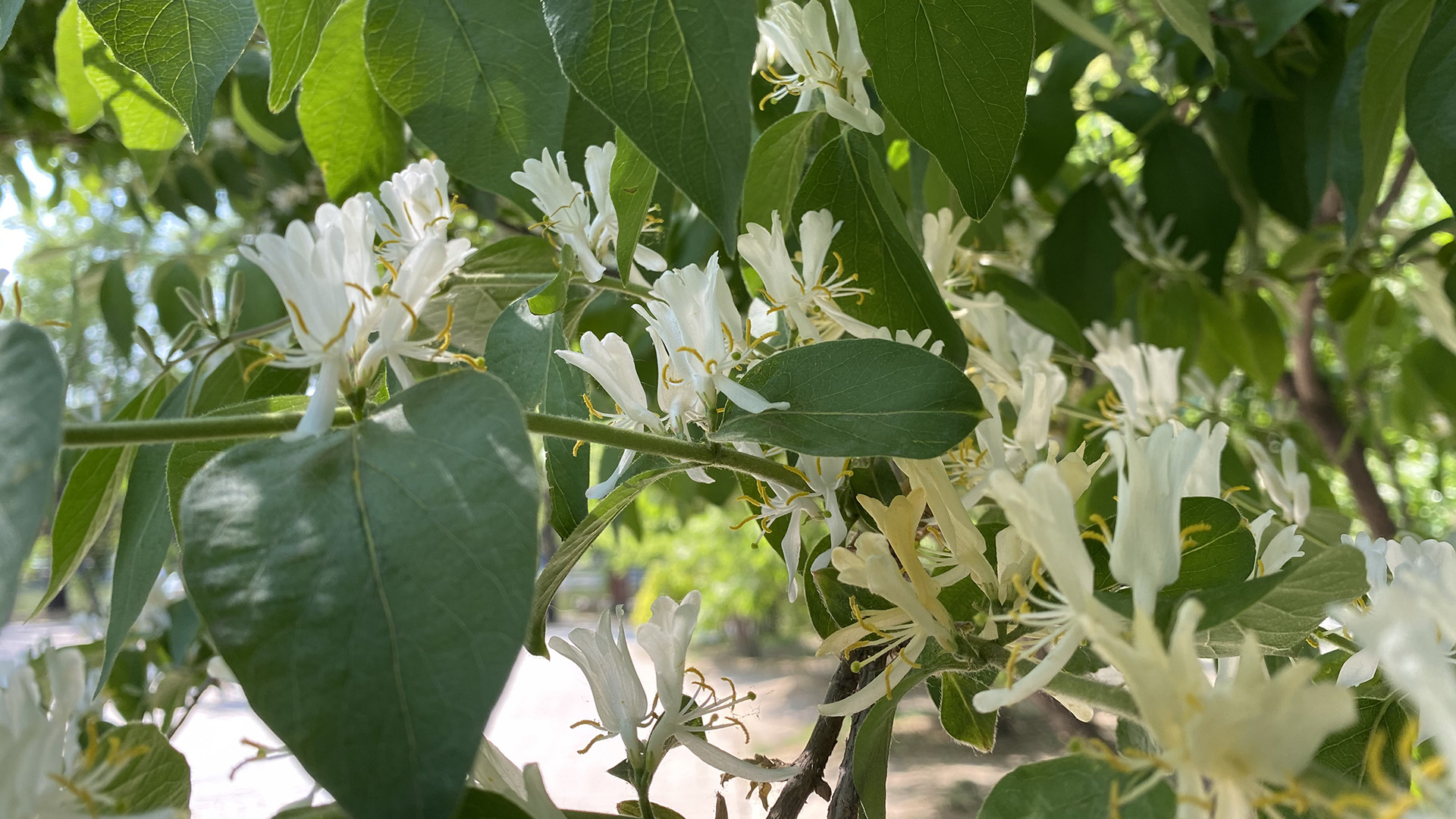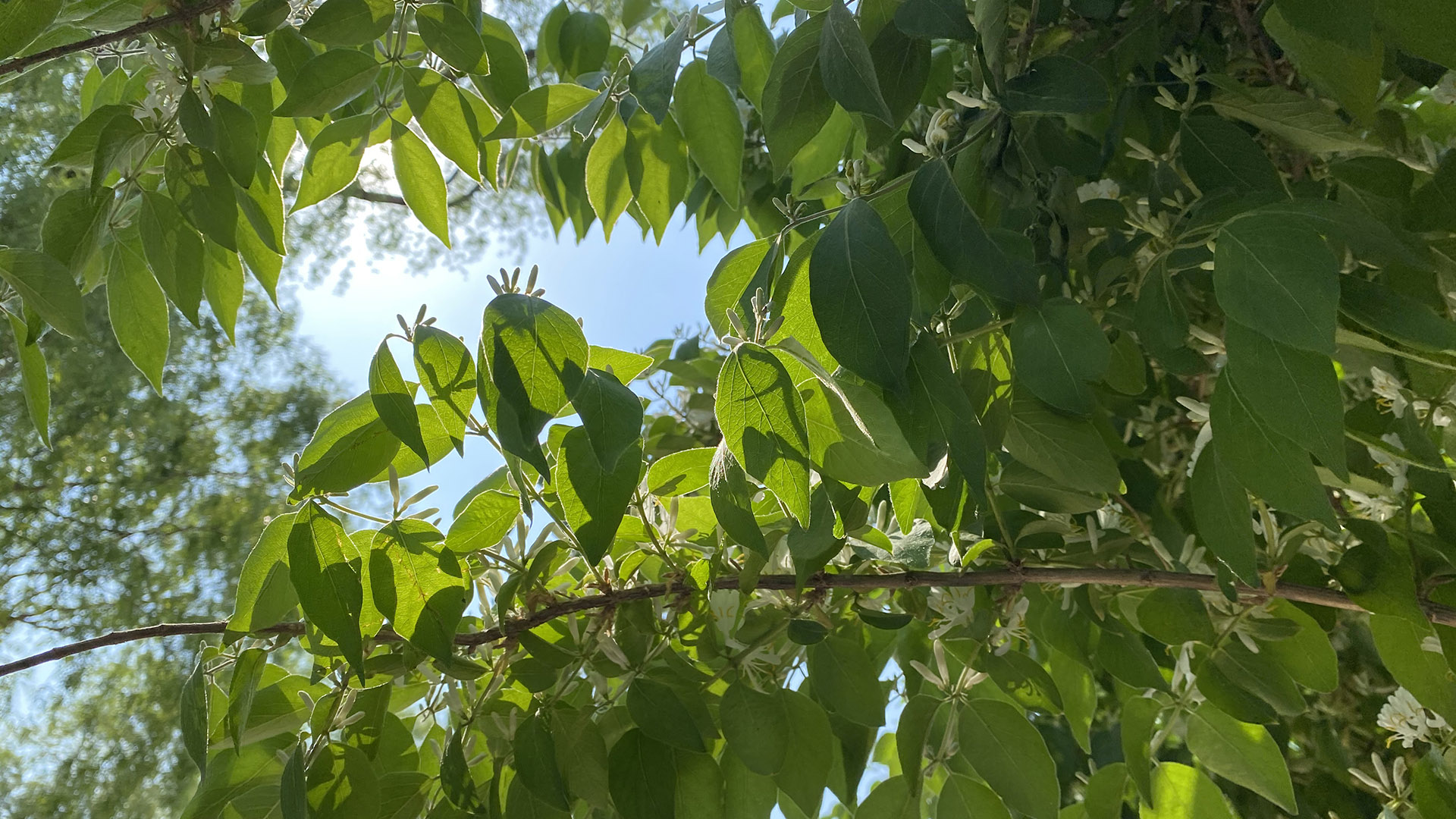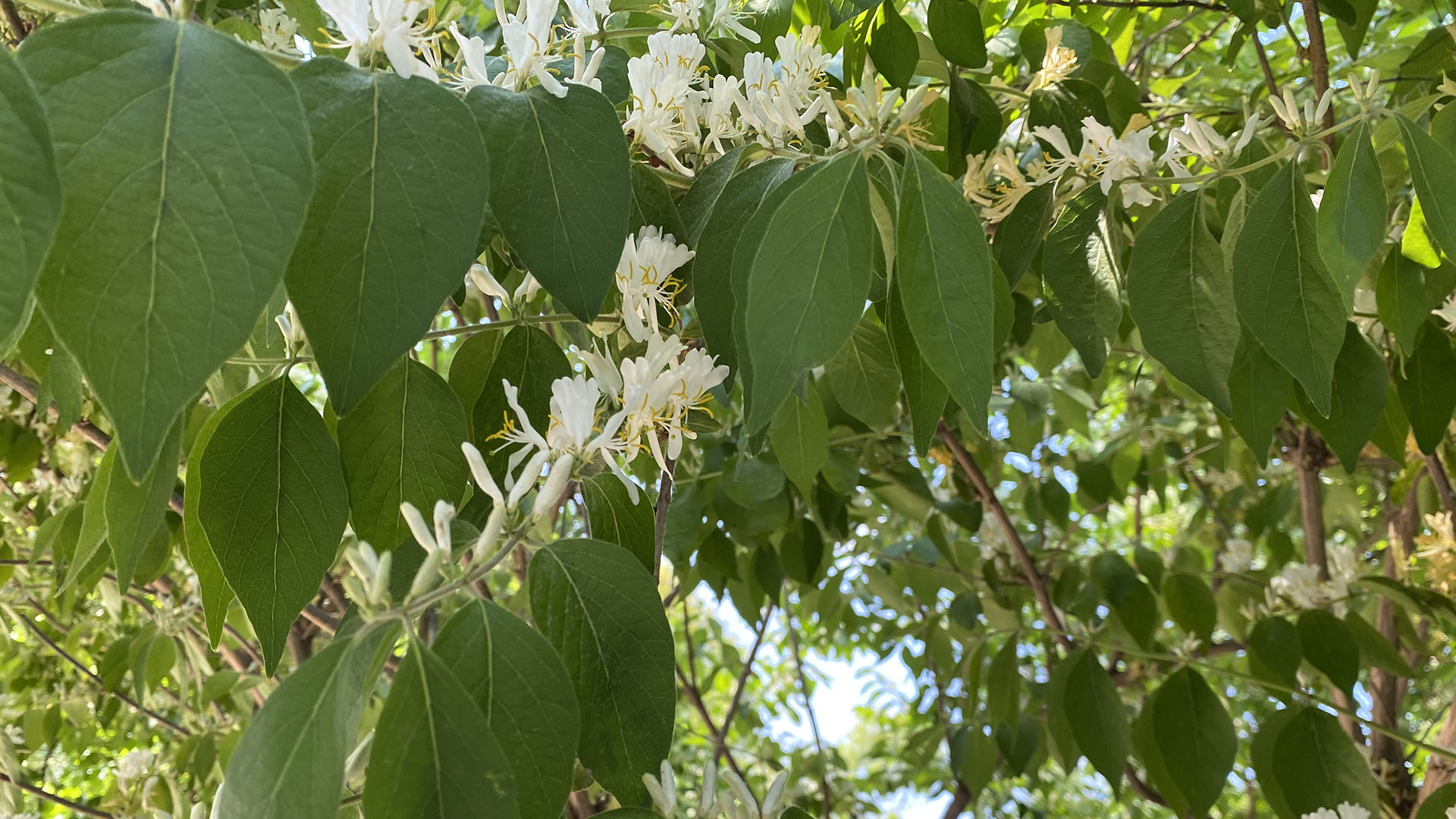In late April, though most of the spring flowers have already withered, you can still find some "early bird" summer flowers showing their beauty to the world. For example, if you choose to visit Yuyuantan Park in Chinese capital Beijing, you may find some tiny flowers with both white and yellow petals hiding among green leaves. These are the blossoms of the Japanese honeysuckle, an amazing and useful plant that can be found everywhere in the park.

Japanese honeysuckle flowers in Yuyuantan Park in Beijing, China. /Photo by CGTN's Xu Chenlu
Japanese honeysuckle flowers in Yuyuantan Park in Beijing, China. /Photo by CGTN's Xu Chenlu
Japanese honeysuckle is also known as the golden-and-silver honeysuckle. It is native to East Asia and famous for its use in traditional Chinese medicine. Its flowering period usually occurs between April and June, and sometimes in autumn as well.

The foliage of Japanese honeysuckle seen in Yuyuantan Park in Beijing, China. /Photo by CGTN's Xu Chenlu
The foliage of Japanese honeysuckle seen in Yuyuantan Park in Beijing, China. /Photo by CGTN's Xu Chenlu
The Japanese honeysuckle flower has a very magical characteristic, as the white petals gradually turn yellow during the fading process. Therefore the name golden-and-silver honeysuckle. The flower has a sweet scent like vanilla, and ancient Chinese people have found it can treat fever, cough and sore throat.

Japanese honeysuckle flowers seen in Yuyuantan Park in Beijing, China. /Photo by CGTN's Xu Chenlu
Japanese honeysuckle flowers seen in Yuyuantan Park in Beijing, China. /Photo by CGTN's Xu Chenlu
Japanese honeysuckle is widely grown in China as it has fewer temperature and soil conditions needed to bloom. It is usually grown for ornamental and medical purposes. However, in countries like the United States and New Zealand, the Japanese honeysuckle is considered an invasive species and even as weed.
(Cover via VCG)
(If you want to contribute and have specific expertise, please contact us at nature@cgtn.com.)

